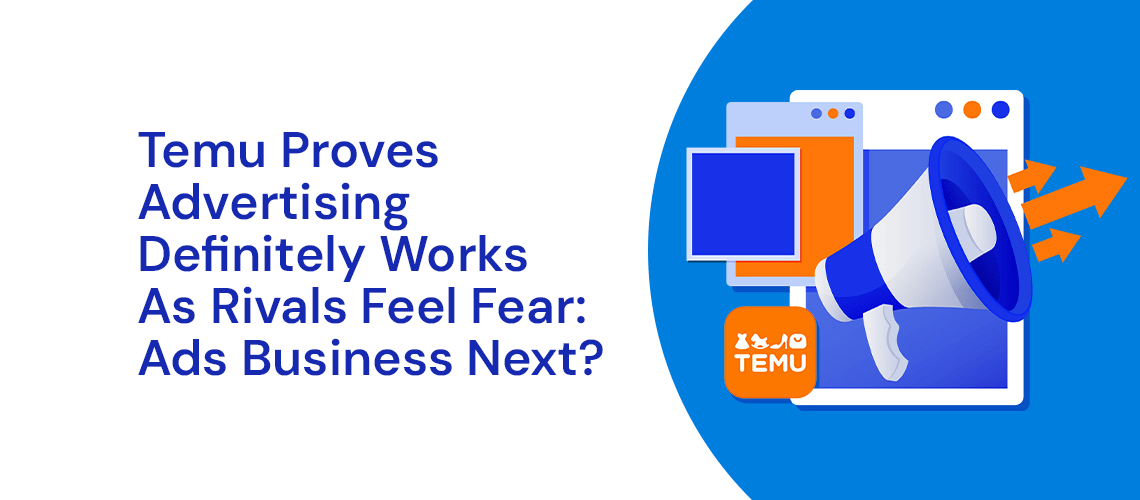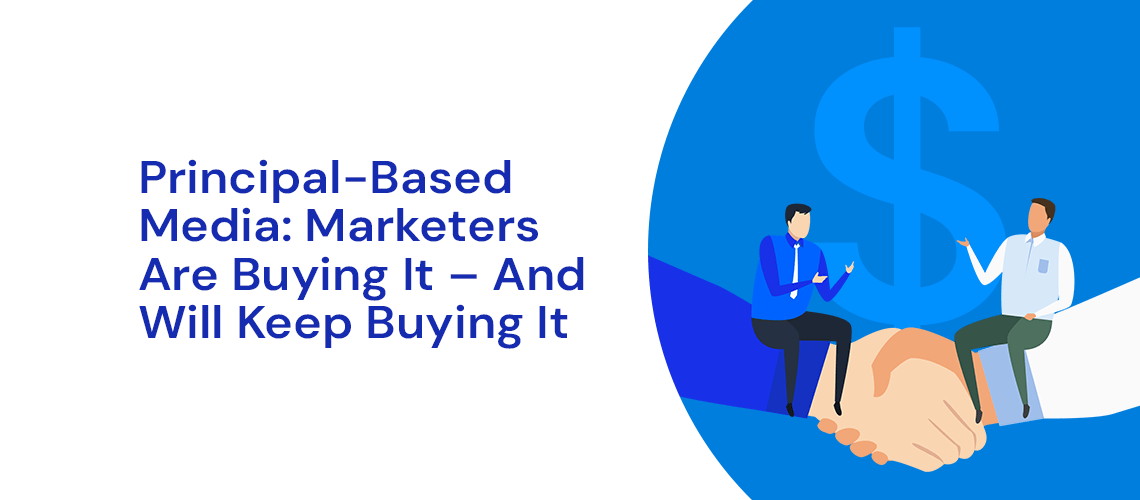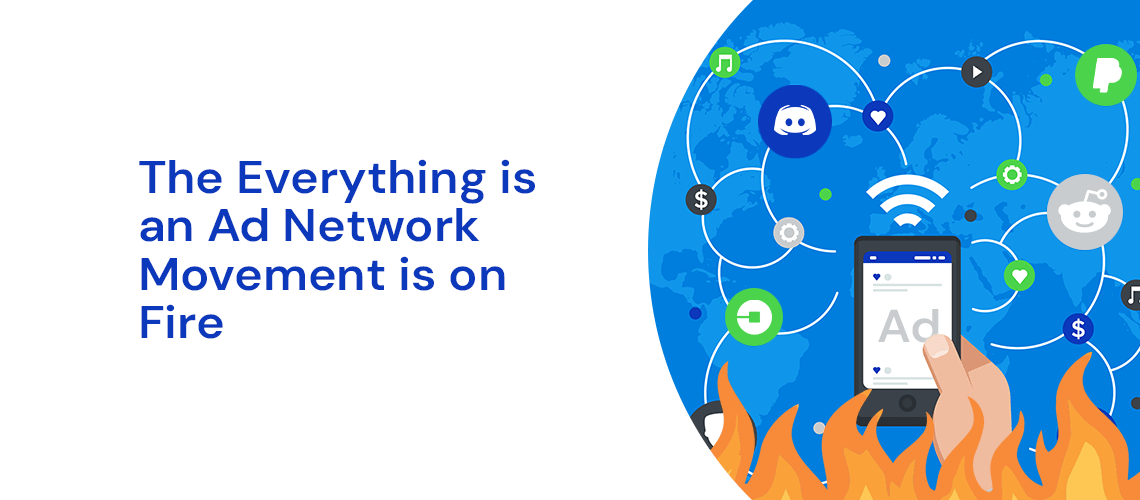
Temu Proves Advertising Definitely Works as Rivals Feel Fear: Ads Business Next?
May 28, 2024
Principal-Based Media: Marketers Are Buying It – And Will Keep Buying It
July 4, 2024
Every platform becomes an ad network, eventually. That was the contention in a now-famous blog by the number one mobile advertising analyst in the world, Eric Seufert.
As usual, Seufert was early on the money.
In the past year, the Everything is an Ad Network movement has gathered incredible steam and Seufert even updated his blog in April, publishing Everything is an ad network. Attention is finite,
In the original 2021 blog, Seufert wrote: “Digital advertising is losing its unfettered, unconsented access to user data and behavioral data emissions. As this foundation of limitless access to user data is challenged and potentially eradicated, the ground beneath the digital advertising ecosystem shifts, and new operating models emerge to capture the attendant inchoate opportunity. One of those new operating models is that everything becomes an ad network”.
It’s worth noting that he also adds: “Not literally everything. But any company with sufficient supply of or access to consumer data — in a first-party environment! — is now presented with the opportunity to build an advertising network where previously that would have been impractical or even somewhat absurd given the competitive landscape.”
In his 2024 blog, Seufert describes why retail players are pouring into advertising: “Retail media networks proliferated in the Everything is an ad network paradigm because privacy restrictions have starved social media advertising platforms of the user-level data that rendered their targeting mechanisms so powerful and appealing.” His thesis has been added to by many players, such as this post last year from a data vendor: “From travel and financial service providers to food delivery services, first-party customer data is being used to sell highly sought-after advertising inventory and create valuable revenue streams,” data vendor Axciom noted. “The savviest service providers are realizing the value of their first-party customer data, and are unlocking this value through proprietary ad networks.” It’s also about captive attention, and monetizing their user base in a non-subscription, or per charge way. The modern ad network is morphing into a true audience network.
The New Ad Networks

Here are some of the ad networks announced in the past year:
Reddit: In March the so-called front page of the Internet announced a new ad format that will help advertisers create in-depth conversations. At the time, it claimed that one brand saw a 91 percent upvote rate and a 42 percent increase in its click through rate by using its new ad format. The ad network announcement helped the company raise $750 million for its IPO.
United Airlines: In June, the US’s workhorse airline unveiled the airline industry’s first media network, tapping Macy’s and Dentsu as launch partners, and announcing a new business unit, Kinective Media, which deploys travel behavior data to power personalized ads.
Chase Media: Their catch cry is “80 million Americans bank on Chase. Now marketers can too”. Their new division, Chase Media Solutions, claims to power transaction-based marketing campaigns that connect an advertiser’s brand with their customers through everyday purchases.
PayPal: The payments provider has hired the former head of Uber’s ad business to run their ad business. It follows Chase and Revolut into the market – but with huge scale. PayPal has around 427 million customers.
Lyft: The rideshare company is targeting $400 million in ad revenue in 2027. In August last year, Lyft launched in-app advertising and other elements in order to attract brands.
Discord: The voice and video chat service for gamers surprised its fans by moving into the sponsored or ad game earlier this year. It now offers ad slots to game developers, enabling them to build their own follower base, and earn money from sales, in-app purchases and in-game ads.
Uber: The no. 1 global car ride service is targeting $1 billion in ad revenue this year. At the start of this year, Uber said it expanded video ads to new markets, including Australia, Brazil and Chile, reaching 12 countries with ad offerings. It’s also expanded in-car tablets to more than 50 US cities.
Marriott: The hotel chain launched its Media Network two years ago, ran into problems on the ad server side, and is now moving its in-room ad service to Google, according to a recent report.
Costco: The giant US store chain is building an ad business using its shopper’s data, making it another retail media network player.
Walmart: Walmart Connect, the retailer’s ad business, made $3 billion in revenue last year, so it’s not a new entrant. However, it plans to dramatically expand its suite of ad services this year, enabling its display business to become more programmatic and auction-based, and making its self-service option available to emerging brands. Walmart’s ad business is still growing at 25 percent a year. The retailer has acquired smart TV maker Vizio, adding a new media channel to the mix.
Target: The retailer also doesn’t belong on this list as it's been selling digital ads for more than ten years, and is the fourth largest retail media network behind Amazon, Instacart and Walmart. It recently revealed that its advertising business delivered $1.5 billion in strategic value last year.
United Flys High, Others Warn of Saturation

Of all these players, it's perhaps United Airlines that has gained the most recent press, probably because it set up Kinective Media to tackle the opportunity. As retail media expert Roger Dunn pointed out, United has in-flight screens and entertainment app inventory, along with other ad slots potentially placed within a plane. Kinective allows marketers to engage with consumers across United’s mobile app, which sees nearly 100 million sessions per month, and its fleet’s nearly 100,000 seatback screens, which provide the potential for 3.5 hours of attention per traveler based on average flight time. The airline is hoping that enough flyers opt in to share their anonymized location data, enabling them to package an ad buy for airport retailers.
“United is also personalizing ads in the app that its passengers use to book flights and check in,” said London-based writer Simon Andrews in his influential Fix/Lite newsletter. “If users opt to share their location with the United app, then United can share that anonymized location data with retailers and allow them to buy ads targeted based on a consumer’s real-time location — such as targeting people in a certain airport where the retailer has a store.” (Uber has likewise reported some success with drinks advertisers, given it knows where travelers are going – and if it’s a bar, there’s usually a brand willing to tap that opportunity either in app or in-car).
Still the mad rush to advertising, which is predicted to reach US$989 billion globally this year, won’t be nirvana for all new entrants.
“Some of these offerings are quite uninspiring and you have to question the quality of advice but one day they are going to have to explain on an analysts call what happened.” One thing is for sure, as former Wall St Journal writer Mike Shields penned, all of these companies are coming for your digital wallet. He questions whether the fintech and payments brands (PayPal and Revolut) have made a leap too far.
“It's one thing to show people ads for athleisure brands on Target.com when they search for yoga pants, but using people's personal finance and/or purchase history to power an ad business?”, he wrote.
A legitimate question. But is it really so different to the massive – and ever popular – loyalty programs powered by the credit card giants? As Seufert may one day write: ‘Every brand becomes a loyalty program, eventually’.
